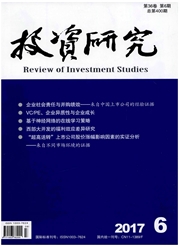

 中文摘要:
中文摘要:
为准确地反映我国新兴能源期货市场与欧美成熟能源期货市场的风险结构特征,本文以我国上海燃料油期货价格(SHRY)和美国西德克萨斯原油期货价格(WTI)为代表性的研究对象,运用GARCH、FIGARCH、HYGARCH、FIEGARCH以及FIAPARCH五种模型来捕捉能源期货市场的波动特征,同时运用极值理论(EVT)对损失尾部进行建模分析来测度能源期货市场的动态极端风险,并用返回检验(Back-Testing)对其模型的准确性与可靠性进行检验。研究结果表明:EVT能够有效地刻画新兴能源期货市场和成熟能源期货市场的尾部风险;基于长记忆的HYGARCH模型不仅能够准确地反映我国能源期货市场的波动特征,而且也能够准确有效地刻画发达成熟的西方能源期货市场的波动特征;ARMA-HYGARCH-EVT模型不仅在VaR测度下表现出较强可靠性,而且在ES测度中也表现出了较好的测度效果。
 英文摘要:
英文摘要:
To accurately explore the risk structure characteristics of mature and emerging energy futures markets, GARCH, FIGARCH, HYGARCH, FIEGARCH and FIAPARCH are used to analyze conditional volatility of energy futures markets, which draw upon Chinese Shanghai fuel oil futures prices (SHRY) typical of emerging energy markets and West Texas Intermediate oil prices (WTI) typical of developed energy markets, and Extreme Value Theory (EVT) is used to model energy standard loss tail, and then back-testing technology is used to test the accuracy of above models. Our results indicate that EVT effectively depict loss of tail risks in the emerging and mature energy markets; HYGARCH model not only can accurately reflect the characteristics of the fluctuations of Chinese energy futures market, but also can effectively depict volatility characteristics of the developed western energy futures market; ARMA-HYGARCH-EVT model not only shows greater reliability in VaR measure, but also shows good measure results in ES measure.
 同期刊论文项目
同期刊论文项目
 同项目期刊论文
同项目期刊论文
 期刊信息
期刊信息
